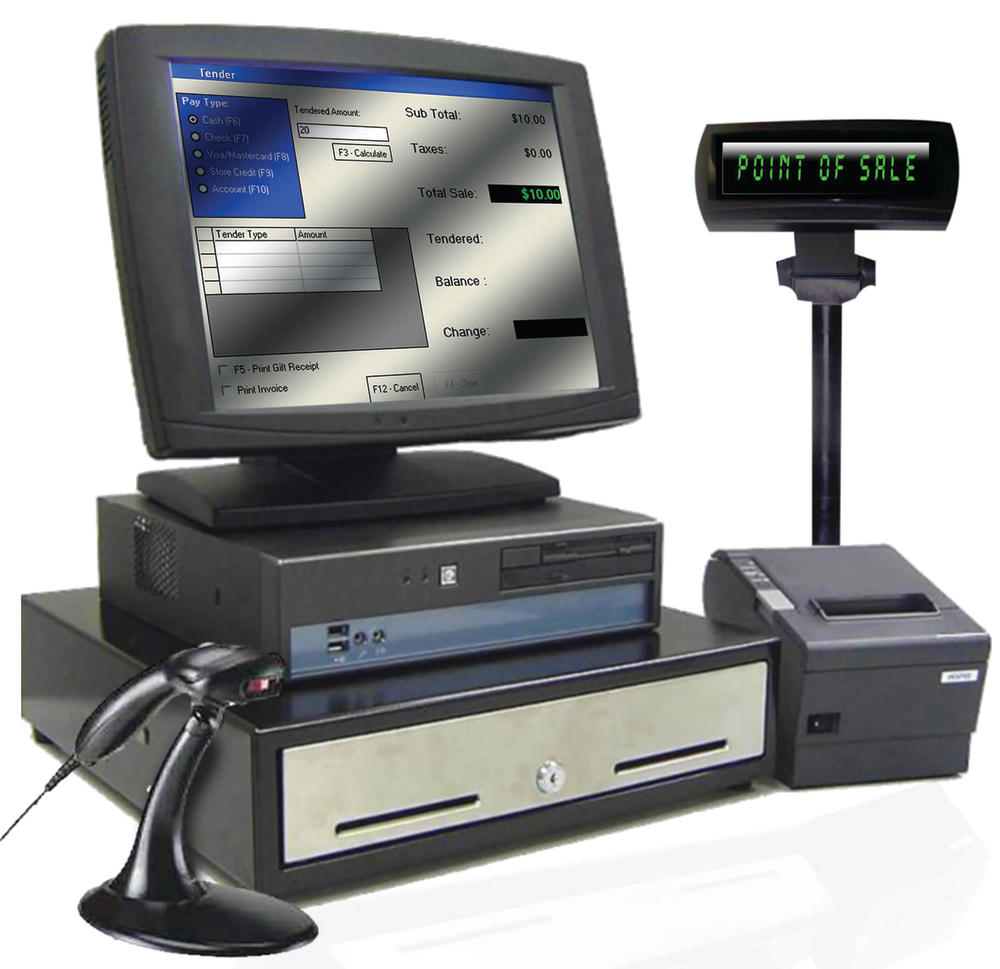Accounting
2018 Review of Point-of-Sale Systems for Small Business
Visit any coffeehouse and you’ll see customers paying with the cellphones. Go to a flea market or craft show and instead of a clumsy credit card machine, you’ll see a nice little attachment on the seller’s cellphone that processes payments instantly.
Sep. 10, 2018

Years ago, when working at an insurance company, I was processing payments that had been sent into the company’s lockbox at the bank. After a particularly large batch, one of my co-workers said, “Just wait until cash becomes obsolete. We’ll all be using a card for money instead.”
I laughed. My co-workers laughed. We’re not laughing anymore.
Visit any coffeehouse and you’ll see customers paying with the cellphones. Go to a flea market or craft show and instead of a clumsy credit card machine, you’ll see a nice little attachment on the seller’s cellphone that processes payments instantly. Instead of a print receipt, you can have a receipt emailed to you instead.
All very different from the cash register, which is becoming rarer and rarer as time goes on.
While there will always be those that prefer to pay in cash, the vast majority of us carry little, if any cash on our person, instead preferring to conduct all transactions using our telephone or a debit or credit card.
The retail business has adapted accordingly, as technology has made it easier than ever to buy something. Those unable to adapt have ceased to exist, with an influx of online retailers poised to take their place, as online sales continue to exhibit impressive growth from year to year. Today, 51 percent of Americans have indicated that they prefer online shopping, making it more important than ever before that even the smallest brick and mortar shops offer some form of online shopping.
We know that traditionally, the end goal of a retail business has been to increase sales. But what many retail businesses owners fail to comprehend is that making the shopping experience easy for their customers is just as important as the sale itself.
These are the common denominators that all retail businesses need, whether small or large, brick and mortar or entirely online:
- They need to process sales quickly and efficiently
- They need to have a backup system in place should their computer crash
- They need to be able to handle refunds and credits effectively
- They need to be able to produce accurate sales reports
While the needs of the giant big box store certainly differs from the small pet store near your house, they both need to be able to do the things listed above. They may also want to do other things to stimulate sales, such as tracking customer purchases on a loyalty card, targeting customers for sales events, tracking customer sales history, and manage inventory levels. For those with an online business, the needs differ, as an efficient online shopping cart becomes one of the most important things to utilize.
Of all the software products available for a niche industry, the point of sale software industry has perhaps experienced the most change over the last ten years. Point of Sale applications have added a multitude of features to its products, including integration with e-commerce sites and shopping carts, as well as the ability to process payments from anywhere, at any time.
Of course, one other thing that is an absolute necessity with any point of sale system is good support. I’ve seen retail operations come to a standstill when their computer goes down, or their Internet connection is lost. The sale is the lifeblood of the retailer, and watching a potential sale walk out the door because your computer is down is not only painful, it’s not necessary.
Like any software application, point of sale systems vary widely in features, functionality, and price. You and your client will know what features are necessary for their business, and we’ve included a chart that displays the availability of popular features and functions such as mobile accessibility, barcode scanning, customer tracking, inventory management, touch screen capability, and the availability of product support when you need it.
The products reviewed in this issue include:
- AccuPOS
- AddSum
- Celerant Stratus
- Cumulus Retail
- Denali Point of Sale
- Keystroke
- QuickBooks POS
- RetailSTAR
- Vend POS
- Wasp Barcode
This is likely only the beginning of the changes the retail industry will experience in the coming years. As your clients look to the future, they’ll need a product that offers them the ability to manage their business easily and effectively, both now and in the coming years.
